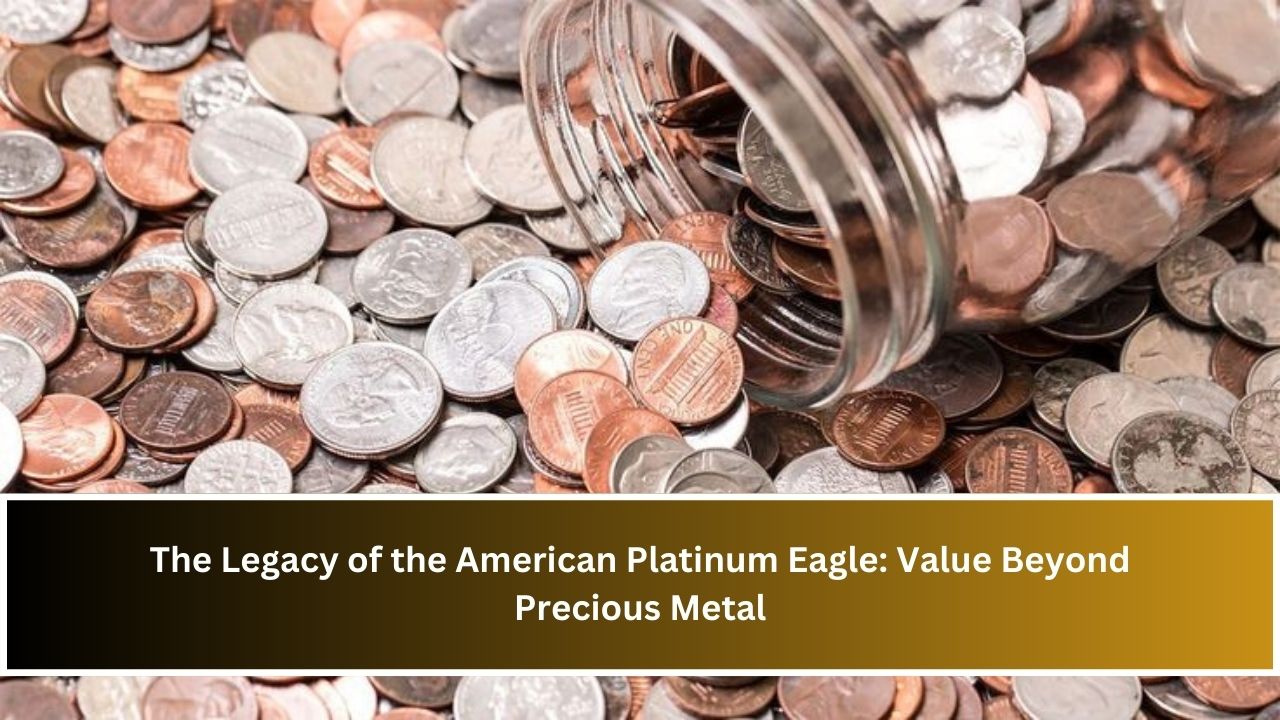The American Platinum Eagle is a symbol of prestige and strength in the numismatic world. Introduced by the U.S. Mint in 1997, this unique coin is made of 99.95% pure platinum and has captured the attention of collectors and investors alike. Beyond its precious metal value, the Platinum Eagle holds historical significance, with a rich legacy tied to American culture and economy.
History of the American Platinum Eagle
Early Beginnings
The concept of the American Platinum Eagle was first introduced by the U.S. government in the 1990s. The purpose was to create a bullion coin similar to the popular American Gold Eagle and Silver Eagle. Platinum, being rarer than gold or silver, was chosen for its unique characteristics and prestige.
First Release
The inaugural Platinum Eagle was released in 1997. It featured a distinctive design that showcased Liberty, the nation’s enduring symbol of freedom. The design was created by the famous coin designer John Mercanti, who also designed other iconic American coins.
Features of the American Platinum Eagle
Composition and Design
The Platinum Eagle is made of 99.95% pure platinum, giving it a high level of purity and a unique, silvery-white appearance. Unlike gold and silver, platinum is denser, which makes the coins heavier.
The obverse (front) design typically features a depiction of Liberty, holding an olive branch and a torch, representing peace and freedom. The reverse side features various designs, with themes that have changed over the years, including eagles, historic buildings, and other American symbols.
Denominations and Sizes
The Platinum Eagle comes in three denominations: 1/10 oz, 1/4 oz, and 1 oz. Each coin size reflects the amount of platinum contained within it. The 1 oz coin is the most sought after due to its larger size and potential value.
Value and Investment Potential
Spot Price and Premium
Like other precious metal coins, the Platinum Eagle’s value is influenced by the current spot price of platinum, as well as a premium for the coin’s rarity and design. Platinum prices are typically higher than gold or silver, making the Platinum Eagle an attractive option for investors looking for higher returns.
Collectability
The Platinum Eagle is also highly collectible. Limited mintage coins or those with unique designs tend to command higher prices over time. Investors and collectors alike are drawn to these rare editions, making them a valuable addition to any portfolio or collection.
Table: Platinum Eagle Coin Information
| Denomination | Weight | Purity | Approximate Value (USD) | Designer | Year Introduced |
|---|---|---|---|---|---|
| 1/10 oz | 3.11 grams | 99.95% | Varies | John Mercanti | 1997 |
| 1/4 oz | 7.78 grams | 99.95% | Varies | John Mercanti | 1997 |
| 1 oz | 31.1 grams | 99.95% | Varies | John Mercanti | 1997 |
Legacy and Cultural Importance
The Platinum Eagle is more than just a coin; it is a reflection of American history and values. It serves as a reminder of the country’s strength, freedom, and pursuit of excellence. Over the years, its legacy has grown, and it continues to be a sought-after piece for both its intrinsic value and cultural significance.
Conclusion
The American Platinum Eagle holds a unique place in the world of numismatics. Beyond its precious metal content, it symbolizes history, freedom, and prestige. Whether as an investment or a collector’s item, the Platinum Eagle remains a timeless piece that captures the imagination of many.
FAQ’s
1. Is the American Platinum Eagle worth more than its face value?
Yes, the Platinum Eagle is valued based on the spot price of platinum and its rarity, making it worth significantly more than its nominal face value.
2. How rare are Platinum Eagles compared to Gold and Silver Eagles?
Platinum Eagles are rarer than Gold and Silver Eagles, with limited mintage editions fetching higher premiums in the market.
3. Can I sell my Platinum Eagle coin easily?
Yes, Platinum Eagles are widely recognized and accepted in the market, making them relatively easy to sell.
4. What should I consider before investing in Platinum Eagles?
Investors should consider the current platinum market value, mintage numbers, and the coin’s historical significance to make informed decisions.

